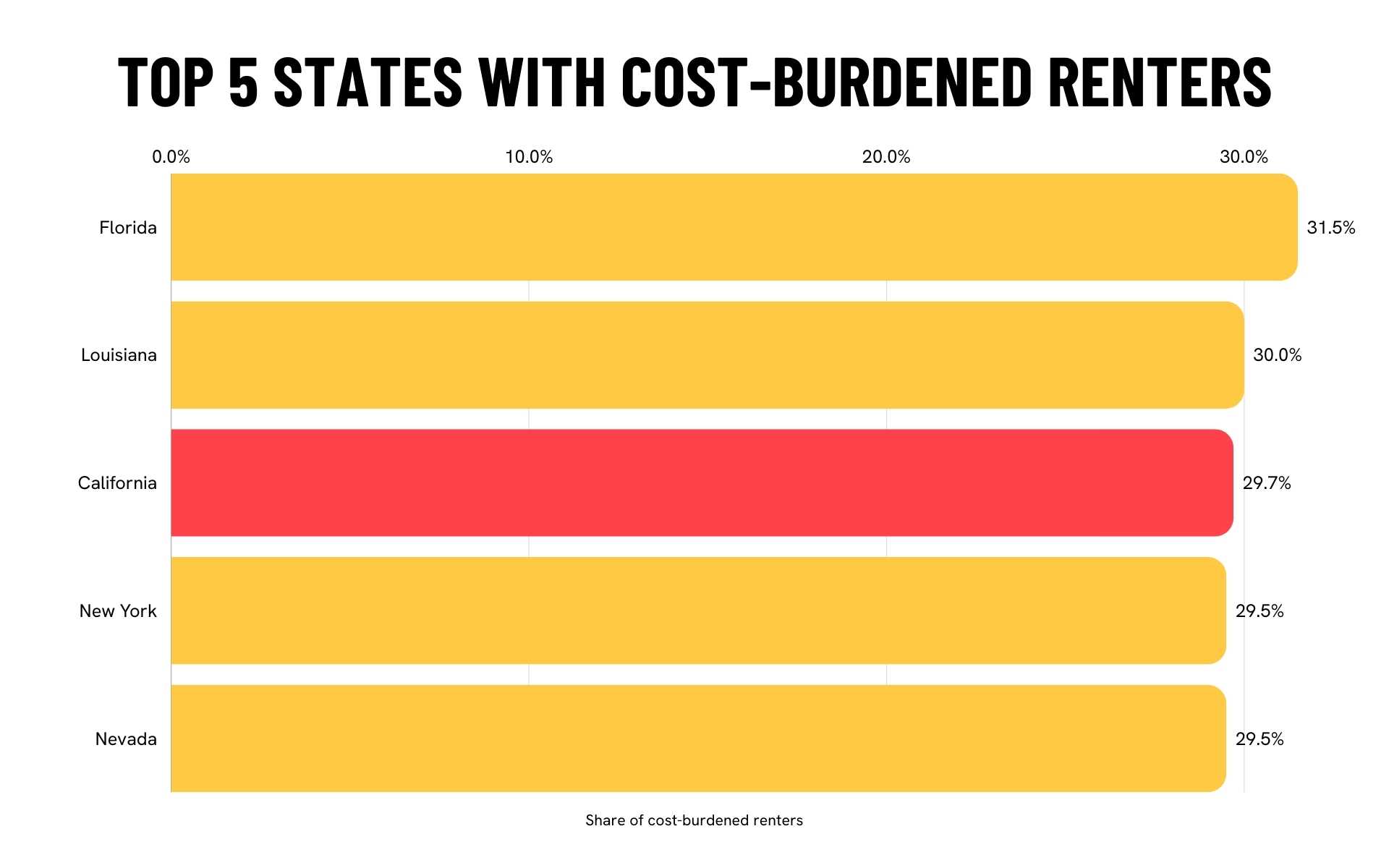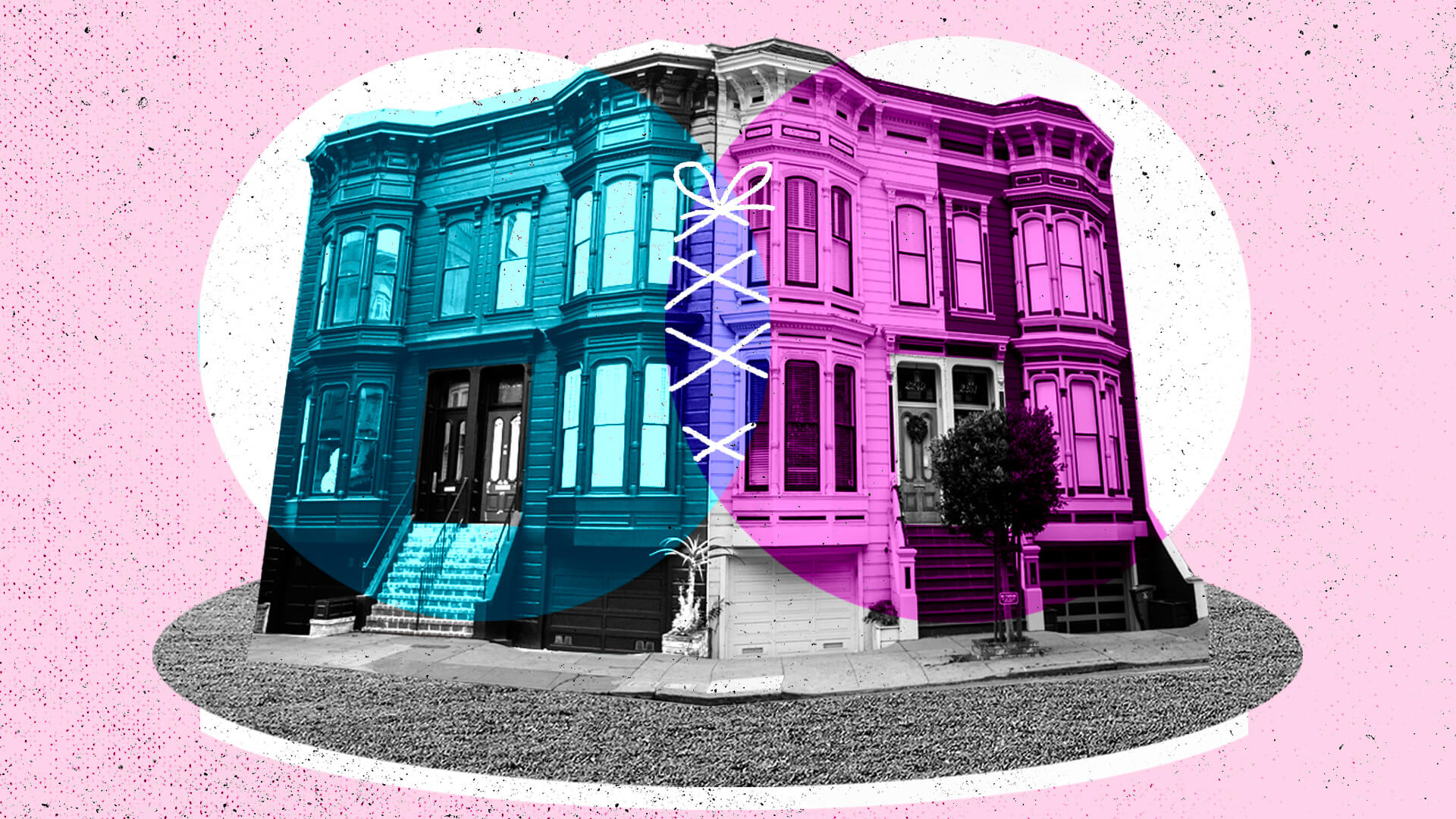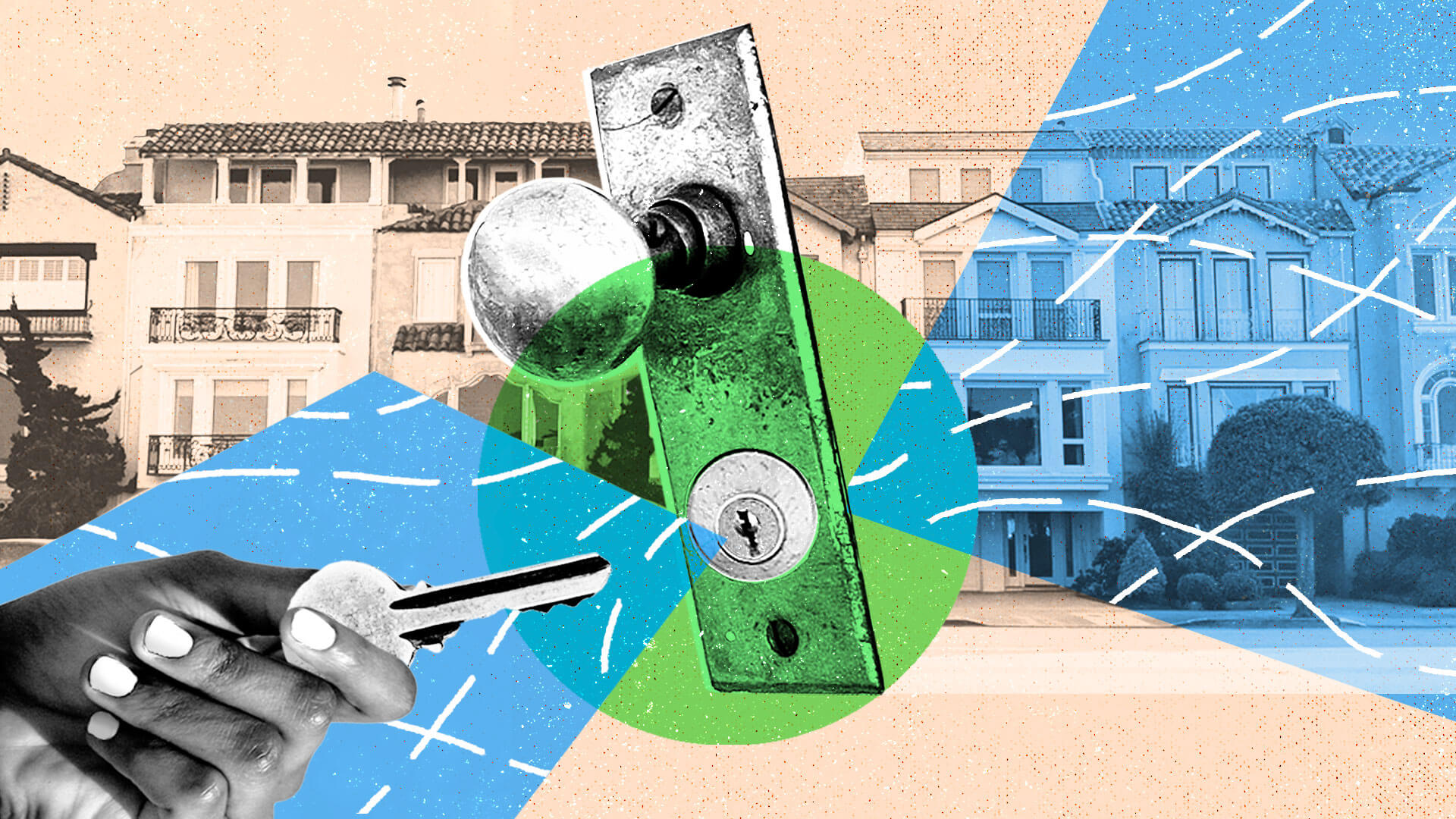May 15, 2024 · 12 min read
7 Creative Solutions to Affordable Housing in California
We’ve learned a lot over the years about how to solve California’s housing crisis. The solutions below are proof that, yes, it can happen.
Everyone deserves a safe, stable and affordable place to call home. But right now, demand for housing outpaces supply across California — contributing to the state’s affordable housing crisis.
According to the National Low Income Housing Coalition’s annual report, California has only 24 affordable housing units available for every 100 extremely low-income households.
At the same time, costs have skyrocketed — for owners, renters and builders alike. Despite being a relatively high-income state, California has one of the highest numbers of renters who are severely cost-burdened or pay 50% or more of their income for housing.

Families increasingly have to decide between basic necessities like food, transportation and healthcare, and paying their rent or mortgage. In the most extreme cases, people are forced to leave their communities entirely or even live on the street or in temporary shelters.
Can California Solve Its Affordable Housing Crisis?
At CZI, we believe that, yes, California can solve its affordable housing crisis. We’ve seen several creative solutions to affordable housing work.
Take CZI-supported Project Roomkey, for example. Launched in March 2020, the project moved approximately 62,000 unhoused Californians into hotel rooms.
According to a recent ABT Global evaluation, Roomkey succeeded in preventing COVID-19 deaths among unhoused people. As of January 2024, 22% of people leaving the program landed in permanent housing, and 11% went to temporary housing.
Project Roomkey, funded through federal COVID relief dollars, demonstrated that we could solve the state’s housing crisis with less red tape, more innovation and more flexible funding. It was so successful that California allocated $300 million from the general fund to continue the program — now called Homekey. Furthermore, California passed Proposition 1, winning $6.4 billion in bond money to support mental health and permanent supportive housing for veterans and those experiencing homelessness. (Check out more COVID-19 learnings in solution #4!)
We work alongside community and housing affordability partners on programs like Project Roomkey to ensure people from all backgrounds and income levels can live, work and thrive in California and beyond.
Still, there’s no single solution to the housing affordability crisis. Addressing it requires a comprehensive, all-in approach from activists, organizers, nonprofits, philanthropies, the private sector, and community members.
Xiomara Cisneros, senior housing affordability program officer for CZI’s community work, thinks it’s important to underscore how solutions move at different speeds and that they take time to make an impact. But progress is happening.
Also read: ‘I Believe in What I Do.’ A CZI Housing Manager on Why Everyone Should Have a Home
“This problem has been decades in the making. Not only do we need more housing for all incomes, we also need to address the underlying inequity in our housing system,” Cisneros says. “Recent research tells us that solutions are working, but they take time to get fully up and running. The solutions are there — we just have to stay committed to seeing them through.”
In honor of Affordable Housing Month, we’re highlighting innovative affordable housing solutions that produce more housing, preserve existing housing, and protect residents from displacement.
1. Exploring New Methods for Constructing and Producing Homes

Rising construction prices are a significant contributor to the housing affordability crisis. In California, the increase in construction costs is particularly acute. According to the 2021-2025 California Construction Cost Index, construction costs in California have increased by approximately 36.5% between January 2021 and January 2024.
One potential solution to rising construction costs is exploring industrialized construction methods, including modular construction, panelized construction and 3D printing.
While much work remains to refine these technologies and bring these new construction methods to scale, they can offer the potential for lower building costs, faster construction time, and environmental and safety benefits. These technologies can make the difference between a project being financially viable or not, and can stretch limited housing financing further to get more affordable housing built.
While there is a consistent and growing demand to utilize modular construction, affordable housing developers need early-stage, flexible pre-development loans that support these new building methods. The Housing Accelerator Fund is one lender addressing this need, providing a custom pre-development loan product for developers of affordable housing utilizing modular so that projects can take advantage of these innovative construction methods not currently widely supported by the finance industry.
2. Encouraging Alternative Forms of Home Ownership

Although traditional homeownership models have worked for a lot of people, discriminatory policies and lending practices such as redlining created systemic barriers that have perpetuated the racial wealth gap and limited homeownership opportunities.
According to a National Association of Realtors report, in 2021, the homeownership rate for white households was 72.7%, 51% for Latina/o/x households, and 44% for Black households — only 2 percentage points higher than at the passage of the Fair Housing Act in 1968.
Our current homeownership system is clearly not working for everyone and having a disparate impact, so we must both make changes to make it work better for everyone — like supporting pathways to scale affordable homeownership — and encourage alternatives that may serve excluded communities better.
These alternatives include community land trusts, housing cooperatives or resident-owned communities, and more affordable condos like Tenancy in Commons. These models challenge conventional norms by creating permanently affordable paths to residential stewardship and shared wealth-building opportunities.
A community land trust (CLT) allows local communities to acquire and own land collectively. It’s a model that creates shared value and enables communities to steward property to meet their unique needs — from producing, protecting, and preserving affordable housing to maintaining community spaces, parks and gardens.
Housing cooperatives are resident-owned multi-unit buildings where members purchase shares, granting them rights to an affordable unit.
Resident-owned communities often consist of manufactured home communities where residents collectively own the land beneath their homes.
At CZI, we partner with several organizations reimagining what ownership in the US looks like and who can access it, including the California Community Land Trust Networks, Frolic and Trust Neighborhoods.
3. Advancing Cross-Sector Housing Solutions

It’ll truly take an all-in approach to solve the housing affordability crisis. That’s where cross-sector housing solutions come in. They are collaborative efforts that address interconnected challenges in our communities — such as equitable access to housing, healthcare, transportation and economic opportunity.
The Partnership for the Bay’s Future (PBF) is an example of cross-sector housing solutions. Launched in 2019 around a shared commitment to increase housing affordability for all and build vibrant communities through racial equity and economic inclusion, PBF uses innovative financing and leverages the power of leaders in the field who approach the housing crisis from diverse perspectives. It brings a variety of voices into the effort ― from local governments to nonprofit and community advocacy partners and faith leaders.
PBF and CZI recently celebrated five years of this collective impact approach, including protecting more than 73,000 tenants and financing over 4,400 homes for 11,000 people.
“Safe, stable, and affordable housing is crucial to a family’s success and to building healthy and diverse communities,” says CZI Co-Founder and Co-CEO Priscilla Chan. “Philanthropy is a relatively small player in a problem as challenging as housing, so we needed to get creative to design solutions that were flexible and additive to existing support for affordable housing. Five years in, we’ve surpassed our fundraising goal and deployed that capital to provide housing for thousands of Bay Area residents.”
4. Learning From Successful COVID-19 Housing Solutions

The COVID-19 pandemic forced the government to take unprecedented action and quickly enact and scale several solutions.
One example entailed sending cash aid to tenants and landlords to prevent evictions and foreclosures.
Taking note of the millions struggling to stay afloat due to financial strains caused by the pandemic, local community organizations — including our partners at Housing Now!, Tenants Together and the Alliance of Californians for Community Empowerment — came together to advocate for a statewide eviction moratorium.
Alongside the eviction moratoriums, California deployed $5.2 billion in a rental relief program for people who experienced financial hardship due to the pandemic. The state paid 100% of a qualified tenant’s unpaid rent, dating back to April 2020. The program prevented eviction and supported more than 370,000 households — the majority of which earned 30% of the area median income or less.
Locally, Santa Clara County has continued this cash aid approach. According to Destination Home — a San Jose-based nonprofit with the goal of ending homelessness, in 2019, for every household housed, another 2.5 became homeless. Because of the work of local and county agencies and organizations, in 2023, the rate dropped to 1.7. The county averted 16,818 people falling into homelessness.
CZI partners All Home, United Way of Greater Los Angeles, and the United to House LA Coalition are working to expand cash aid programs — a cheaper, quicker and more humane approach to addressing the homelessness crisis than waiting for someone to lose their home.
5. Transforming Surplus and Underutilized Lands Into Affordable Homes

We need to build homes at a sustainable rate to match population growth in the U.S. The Huffington Post reported that, despite population growth, fewer homes are now on the market than in 1982. One innovative way to address this extreme housing shortage is to convert surplus and underutilized lands — owned by school districts, faith organizations, government agencies, etc.— into permanently affordable housing.
California recently passed legislation to prioritize building housing on government-owned land and streamlined the process for religious organizations and nonprofit colleges to develop affordable housing on their property. These legislative changes help unlock thousands of acres of land — up to 350,000 acres of developable land in California. That many acres is enough to build over 5 million new homes. And faith communities, including churches and other congregations across the state, have over 38,000 acres of land they do not actively use. Their values include serving their communities and those experiencing housing insecurity.
CZI works with organizations such as LA Voice, Firm Foundation, and others to inspire policy change, advance funding partnerships, experiment with cost-saving construction methods, and provide technical assistance to church leaders.
Converting unused spaces into homes can also positively impact California’s education workforce. Far too often, teachers and other staff are forced to either leave their local communities or change their profession altogether so they can keep up with the rising living costs.
According to a cityLAB-UCLA, University of California-Berkeley Center for Cities and Schools, and Terner Center for Housing Innovation report, there is a massive opportunity to turn California’s 75,000 acres of developable school property on large lots into housing for public school teachers and staff. The California School Boards Association is collaborating with districts across the state to explore these opportunities.
6. Leveraging Infill Housing and Densifying Neighborhoods

Infill housing refers to building new residential units on vacant or underutilized lots within existing urban areas or neighborhoods. These types of housing can include accessory dwelling units or ADUs, splitting lots, conversion of non-residential buildings, and demolishing and rebuilding on vacant lots or parking lots within neighborhoods.
Many policy wins have made this innovative housing solution more possible and impactful.
In 2016, California passed the state’s first strong ADU laws. This year, it reached the milestone of permitting 100,000 ADUs.
In 2017, Senate Bill 35 was passed. According to the Terner Center of Housing Innovation, the bill was “designed to address some of the hurdles for locally approving new housing development, like lengthy and sometimes opaque approval processes, and opposition from local governments and residents. Specifically, SB 35 allows qualified multifamily infill projects to go through a simplified and expedited housing approval process in jurisdictions that are not on track to meet their housing production goals.”
Infill housing also has the potential to benefit our climate by reducing driving and, therefore, pollution.
7. Preserving Existing Lower-Cost Housing

As the New York Times reported, California is the most unaffordable state. When the cost of living is taken into account, California ranks as the most poverty-stricken state, with a fifth of the population struggling to get by.
An often overlooked piece of the solution to this challenge is to protect what’s referred to as naturally occurring affordable housing — existing, affordable multifamily rental properties. These buildings tend to be older and owned by mom-and-pop landlords. According to McKinsey, naturally occurring affordable housing constitutes the largest supply of affordable units in the United States.
However, private equity often buys out owners and raises rents quickly — displacing existing residents, exacerbating gentrification, and contributing to homelessness. In other cases, the buildings are in areas of deep divestment and can fall into disrepair. The loss of this housing stock to private equity or disrepair dramatically impacts low- and moderate-income households’ ability to find housing they can afford.
The good news is that efforts are underway to ensure these types of homes remain in local neighborhoods across the country. One example in California is the Los Angeles Local Rental Owners Collaborative (LROC).
Launched in 2021, LROC supports and protects local landlords and their residents, preventing displacement in high-cost markets. LROC achieves its mission by helping local landlords reduce costs and add value to their property, providing free access to property management solutions, awarding relief grants to help offset rental losses, offering financial consulting, and supporting owners navigating local, state and federal relief programs.
So far, the pilot program has supported 52 landlords who own roughly 300 units in South Los Angeles. The owners are 92% people of color — 65% Black and 20% Latina/o/x — most with mortgages and therefore more vulnerable to corporate buyouts.
Thanks to LROC, 97% of the properties remain under the same ownership, and 90% of tenants have stayed housed.
Learn More About Housing Solutions
Our communities are at their best — and most vibrant — when everyone has a safe, affordable place to call home. With continued support for innovative housing solutions like the ones shared above, we can improve housing affordability and access so people from all backgrounds and income levels can live, work, and thrive. Visit our housing affordability page to learn more.
Note: We originally published this story on May 10, 2022. We’ve updated it to reflect current conditions, progress and potential opportunities.





